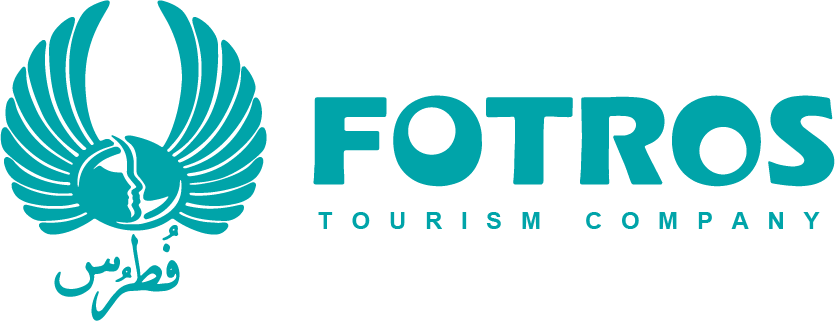
Medical Surgeries
Hip Replacement


Hip replacement, also known as hip arthroplasty, is a surgical procedure in which a damaged or diseased hip joint is replaced with an artificial one. This procedure is typically performed to relieve pain and improve the function of the hip joint, often due to conditions like osteoarthritis, rheumatoid arthritis, hip fractures, or other hip joint problems.
The main types of hip replacements are:
Total Hip Replacement (THR): In a total hip replacement, both the ball (the head of the femur) and the socket (acetabulum) of the hip joint are replaced with prosthetic components. This is the most common type of hip replacement.
Partial Hip Replacement (Hemiarthroplasty): In a partial hip replacement, only the ball portion of the hip joint (the femoral head) is replaced with a prosthetic component. This is typically done when the socket part of the hip joint is still healthy and doesn't need replacement. Hemiarthroplasty is often performed for certain hip fractures.
Revision Hip Replacement: In cases where a previous hip replacement has failed or become damaged, a revision hip replacement may be necessary. This involves removing and replacing the existing prosthetic components with new ones.




Hip Resurfacing: Hip resurfacing is a procedure where the damaged surface of the femoral head is shaved and capped with a metal covering. It is similar to a total hip replacement but preserves more of the patient's natural bone. However, it's used less frequently nowadays due to concerns about long-term metal-on-metal implant wear and potential complications.
Minimally Invasive Hip Replacement: This is a technique rather than a specific type of hip replacement. Surgeons use smaller incisions and specialized instruments to minimize tissue damage and reduce recovery time. Minimally invasive approaches can be used with total hip replacements or other variants.
Hip Resurfacing: This procedure involves placing a metal cap over the femoral head, preserving more of the natural bone compared to traditional hip replacements. It is suitable for certain patients, but it has become less common due to concerns about metal-on-metal wear and potential complications.
Hip Implants Material: The prosthetic components of hip replacements can be made from various materials, including metal, plastic, and ceramic. The choice of material depends on factors like patient age, activity level, and the surgeon's recommendations.
The specific type of hip replacement chosen depends on the patient's age, overall health, the condition of the hip joint, and the surgeon's recommendations. It's essential to consult with a healthcare professional to determine the most suitable approach for each individual case. Hip replacement surgery can greatly improve a person's quality of life by reducing pain and increasing mobility.
Before Hip Replacement Surgery:
Pre-surgical Evaluation: You will undergo a thorough physical examination, medical history review, and diagnostic tests to ensure you're a suitable candidate for hip replacement surgery.
Consultation: Discuss the surgery, risks, and benefits with your orthopedic surgeon. Inform your surgeon of any allergies, medications you're taking, and any medical conditions.
Preoperative Instructions: Follow your surgeon's preoperative instructions, which may include fasting for a certain period before the surgery. You may need to discontinue certain medications or supplements leading up to the surgery.
Home Preparation: Make your home safe and accessible, removing any trip hazards and arranging your living space to minimize the need to bend or reach.




After Hip Replacement Surgery:
Hospital Stay: Typically, you'll stay in the hospital for a few days after surgery to monitor your recovery and receive necessary care.
Pain Management: Pain control is a critical aspect of recovery. Your healthcare team will provide pain relief through medication, often starting with intravenous (IV) medications and transitioning to oral pain relievers.
Physical Therapy: Physical therapy starts as soon as possible after surgery to help you regain strength, flexibility, and mobility. You'll learn exercises to strengthen your hip and the surrounding muscles.
Mobility Aids: You'll likely use assistive devices like crutches, a walker, or a cane to aid in walking and prevent falls.
Wound Care: Keep the surgical incision clean and dry. Your surgeon or nurse will provide specific instructions on wound care.
Medications: You may receive medications to prevent blood clots and antibiotics to prevent infection.
Home Recovery: Once discharged from the hospital, continue your rehabilitation exercises at home. Follow your surgeon's recommendations for weight-bearing and activity restrictions.
Follow-up Appointments: Attend all scheduled follow-up appointments with your surgeon to monitor your progress and address any concerns.
Lifestyle Modifications: Be prepared to make adjustments to your daily routine, such as avoiding certain movements or positions, and ensuring your home remains safe and accessible.
Diet and Nutrition: Maintain a healthy diet to support healing and maintain a healthy weight, which can reduce stress on the new hip joint.
Why iran:
Iran has gained popularity as a destination for medical tourism, including orthopedic procedures like hip replacements, for several reasons:
High-Quality Healthcare: Iran has made significant advancements in its healthcare infrastructure and medical services. Many hospitals and clinics in Iran offer state-of-the-art facilities and employ highly skilled medical professionals, including orthopedic surgeons.
Experienced Surgeons: Iran boasts a large number of experienced and well-trained orthopedic surgeons who can perform hip replacement surgeries with a high degree of expertise.
Postoperative Care: Iran is known for providing comprehensive postoperative care, including physical therapy and rehabilitation services to help patients recover effectively after hip replacement surgery.


Cost-Effective: One of the most significant advantages of getting a hip replacement in Iran is the cost. Medical procedures in Iran are often more affordable compared to many Western countries. This makes it an attractive option for individuals seeking high-quality healthcare at a fraction of the cost.
Short Waiting Times: In countries with socialized healthcare systems, patients may experience long waiting times for elective surgeries like hip replacements. In Iran, waiting times are typically shorter, allowing patients to receive treatment more quickly.
Multilingual Staff: Many healthcare facilities in Iran have multilingual staff who can communicate with international patients in languages like English, Arabic, and others. This can help ease the communication barrier for foreign patients.
Tourist Attractions: Iran offers a rich cultural experience and a variety of historical and tourist attractions, making it an appealing destination for medical tourists who wish to combine their treatment with travel and exploration.


Our services include:
![]() our online services include: quotes and consultation
our online services include: quotes and consultation
![]() Planning the highest word-level medical trips and quality hospitals and medical centers according to the patient's request and budget.
Planning the highest word-level medical trips and quality hospitals and medical centers according to the patient's request and budget.
![]() Appointing treatments by the most skilled and experienced doctors.
Appointing treatments by the most skilled and experienced doctors.
![]() Airport pick-up/drop off, check-ups, accompanying translator, book hotel (for patients and their families)
Airport pick-up/drop off, check-ups, accompanying translator, book hotel (for patients and their families)
![]() Pre-hospitalization / post-hospitalization care services
Pre-hospitalization / post-hospitalization care services
All-Inclusive Medical Travel Packages
based on your budget, our team will assist you in choosing the best hotels, doctors, and medical centers. Our packages include:
 Airport Pickup Services
Airport Pickup Services Airport Dropoff services
Airport Dropoff services Hotel
Hotel Ticket
Ticket visa
visa translator
translator Transfer
Transfer SIM Card
SIM Card Sightseeing
Sightseeing


 why Iran
why Iran
Patients may choose to have abdominoplasty (commonly known as a tummy tuck) in Iran for a variety of reasons
Cost, Quality of Care, Privacy and Discretion, Combined Tourism, no Waiting Times
![]()
Fotros is an Iranian health tourism company with a professional team consisting of a support team and word-level doctors in medical and cosmetic surgeries like Neurosurgery, Rhinoplasty, Breast cosmetic surgeries, Liposuction, tummy tuck, etc.










 why Iran
why Iran